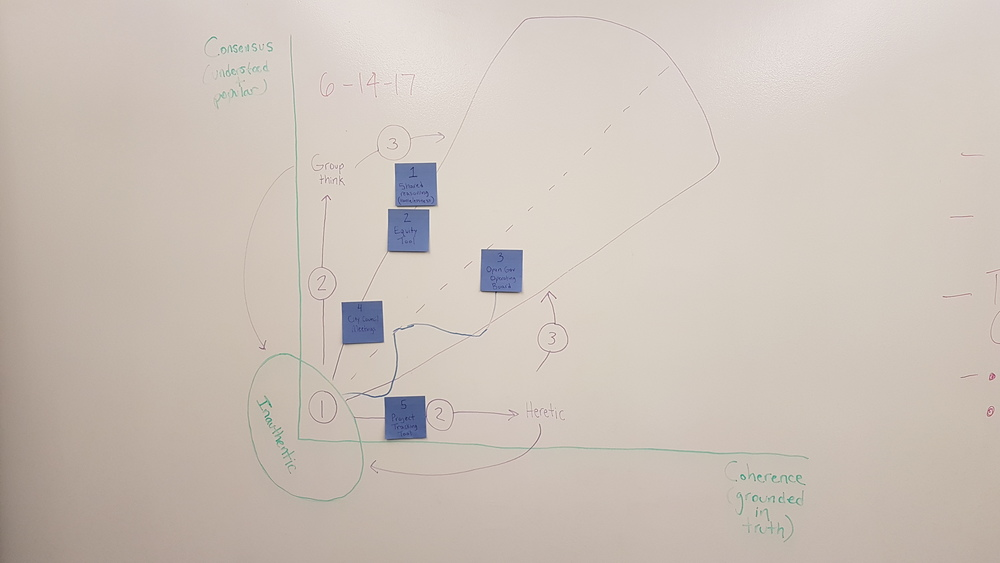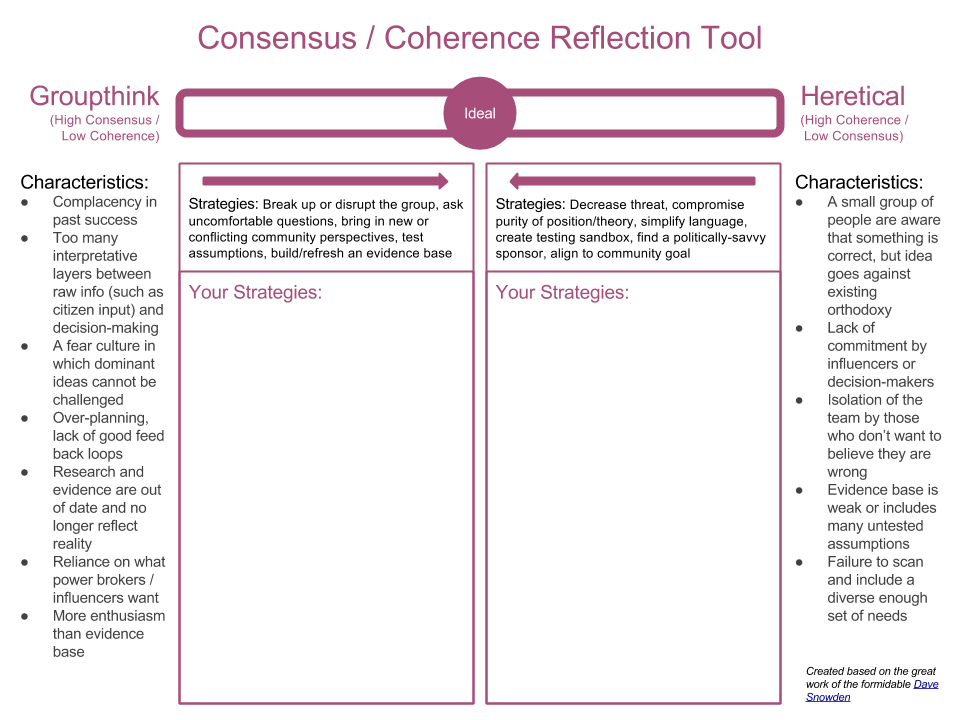Tool: Mid-Year Reflection
This tool was used at the June meeting of Austin's Open Government Partnership (OGP) commitment teams
The Value of Project Reflection
Reflection and retrospectives are important for any project, especially if they are done before the project is completed. They provide a "check-in" for teams to assess their progress against the original goal, understand the factors that have affected any changes in scope or pivots, and identify areas for adjustment or additional help. This is particularly important for projects working in a complex context--which is the case for many public sector projects. Without reflection, projects can stagnate, go down the wrong path, ignore a changing context or discourage team members by what may seem like a slow pace of incremental transformation.
For the Open Government Partnership commitment teams, which are working at all levels of scale, timeline, and complexity, it provided a chance to look at progress to date since the November 2016 commitment declaration, identified barriers to be busted before the end of the year, held project teams accountable for their work (both past and future), and gave the OGP support team an opportunity to see what common needs teams had.
Find a copy of the Reflection Tool Template by clicking here.
A Group Discussion about Consensus and Coherence
I experimented with an activity; I borrowed Dave Snowden's Consensus/Coherence model (discussed in his blogs here and here) and made it a group reflection activity. It is a path through a complex context and balances groupthink with organizational heresy (e.g. non-aligned or too "out there" according to groups working with you). As projects become more stable and more unknowns are starting to be understood, it is important to keep a balance between coherence and consensus.
Here is what Dave Snowden says in a blog about too much of either:
- Pattern Entrainment – High consensus, low coherence
There is lots of agreement about what is needed but little structure to the definition, possibly because there is clear agreement. This is where assumptions can be followed without proper testing or consideration of the need. Its often the area where past practice is retaining its attractiveness long after its applicability has fallen to changing context. - Power Play – Low consensus, high coherence
A very structured requirement with little agreement between factions. The most powerful faction will win with all the possible downsides in lack of commitment, failure to scan enough a diverse set of needs and so on. A variation on this is the maverick who does know but is isolated by fractious politics.
The commitment teams took a first stab at where they thought they were and reflected on what they may need to do before the end of their projects to create more of a balance between consensus and coherence. However, as one of my colleagues astutely pointed out, "self awareness" should be a third dimension here since commitment teams assessed themselves based on gut feel. The main value of this activity as a reflection is to spur discussion and future actions. Additional reflection is absolutely needed as those actions are taken in case the teams originally assessed themselves incorrectly.

If I were to do this activity again, I would include recommended approaches to help get the teams back to the center and have a better balance between consensus and coherence. To that end, I created a second tool for teams to work on individually when they reflect on their project. Again, it is based heavily on the complex adaptive systems work of Dave Snowden. He probably has many thoughts about how I've mashed up his theories to create these tools.

And here is an editable template for teams to use for their reflection: Consensus/Coherence Reflection Tool

